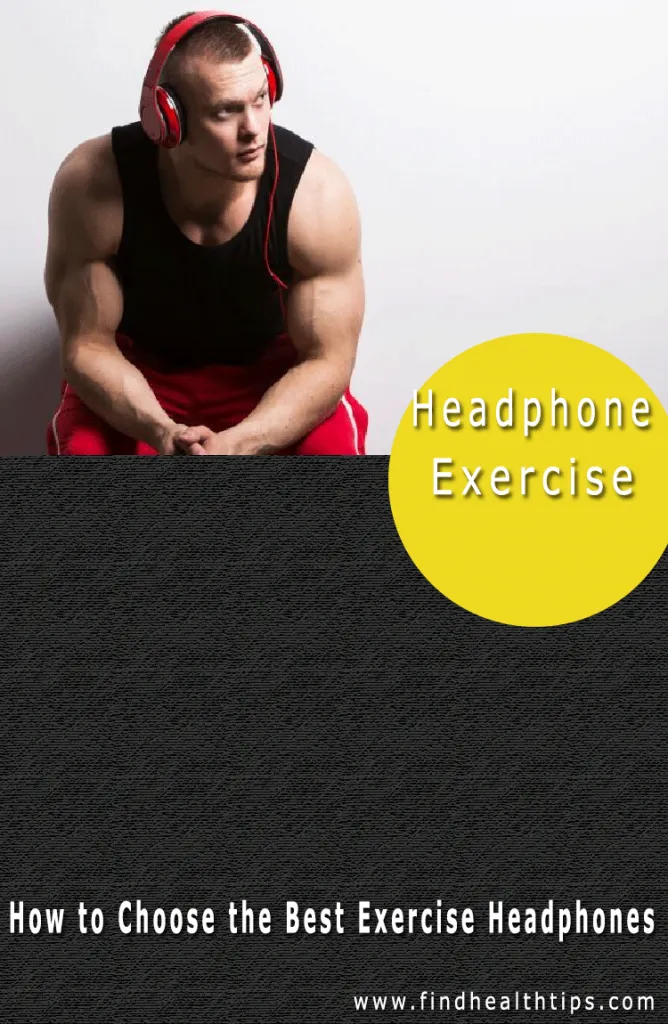Exercising can be a very lonely activity unless you have the ability to focus. If you are just running on an elliptical machine or treadmill, you will find it hard to keep your focus because it is not interesting. However, if you include music in your exercise routine, you will be able to focus and work out.
Here are some tips that will help you to choose the best exercise headphones:
Buds or Full-size
When it comes to choosing a headphone design, you can pick either full size ones with a band that wraps around your head or in-ear buds. Each of these designs has its own sets of pros and cons. When you choose full size headphones, they will have a tight fit and natural sound but they can be somewhat bulky.
On the other hand, in-ear buds are lighter but they do not always fit right. As with most products, you will have to weigh the pros and cons of both before you make a choice based on your needs and preferences.
Choosing Earbuds
If you choose to go with buds, you need to consider the fit before anything else. There is nothing worse than running or stretching while stopping every few seconds to adjust your ear buds. As long as you have normal-sized ear lobes, you will get away with buying regular earbuds.
However, if you have small or large ears, you might need buds with special contraptions that will keep them in your ear canal. Some earbuds loop around the ears or come with physical hooks to ensure that they are comfortable.
Choosing Headphones
When you opt for full size headphones, you will have to consider a few things as well. You have to look at a workout headphones buying guide to ensure that you are choosing the right ones. When picking full size headphones, you can choose between on-ear and over-ear headphones.
Over-ear headphones are more comfortable because they provide some space for your earlobes and outer ear. However, this size will come with some extra bulk that will weigh you down during exercise. On-ear headphones, on the other hand, are lighter and offer a better choice than earbuds and over-ear headphones.
However, most on-ear headphones do not sound as good as over-ear types. Moreover, on-ear headphones might press your outer ears and this will start to hurt after a while.
Cord or No Cord
Although a cord connection produces the best sound, it might get in the way when you are trying to exercise. If you do not want wires in the way, you should consider going for wireless headphones. Before making your decision, you should try corded and cordless varieties during exercise then stick with the ones that work best.
Water Resistant
While you can use any headphone for workouts, some of them can handle the rigorousness of exercise better than others can. For instance, the padding that some full-size headphones have might start to wear down due to frequent exposure to sweat. You should consider buying sweat-resistant headphones that come with removable cushions that you can wash.
Headphones That Allow You to Answer Calls
If you are always receiving phone calls, you should opt for headphones that allow you to answer calls during exercise. You should pick headphones that have built-in controls for answering calls or can synchronize with your Smartphone. This will allow you to keep exercising without missing a beat.
Types of Headphones
In-ear Headphones
These are the smallest headphones and they usually come with most phones. You can buy the in-ear headphones if you are interested in portability. Because they are placed directly in the ear, they offer excellent noise isolation, which makes them ideal for noisy gym environments.
The main disadvantage of in-ear headphones is that they have low sound quality. The smaller the drivers are, the lower the sound quality.
On-ear Headphones
Unlike in-ear buds, these ones do not go directly into the ear canal but sit on the outer ear. The band usually goes over the head or behind it. On-ear headphones have bigger batteries; this means that you will get more listening time out of them. Moreover, they offer better sound quality, making them ideal for listening to workout music.
The major disadvantage of these headphones is that they are harder to carry, so you cannot stash them in your pants or jacket pocket. They also do not have good noise isolation, as they allow some noise to enter.
Over-ear Headphones
These are the largest headphones and they offer the best sound because of bigger drivers. Some manufacturers usually take advantage of the bulkiness to offer the best sound quality above everything else. When it comes to listening time, over-ear headphones offer the best listening times since they have the largest batteries. Their big ear cups offer better weight distribution, which means that the larger headphones are, the more comfortable they will be.
However, you will have a hard time carrying over-ear headphones around because they are bulky. Depending on how good the sound quality is, over-the-ear varieties tend to be the most expensive.
Bluetooth Headphones
When it comes to Bluetooth headphones, they are not necessarily better than their corded counterparts; you just need to weigh the pros and cons. If you are tired of getting the wire caught in the gym equipment, Bluetooth earphones are the best for you. However, these headphones have a battery that needs charging, which means that the music stops when the battery runs out of juice.
Another disadvantage is that wireless connections are weak, meaning that your headphones might suffer from interference. Although this is becoming rarer, it might still happen. There is also the issue of compatibility: newer phones have trouble connecting with older Bluetooth headphones and vice versa.
Before buying a pair of headphones for exercising, you need to do some research to ensure that you buy the best ones. The above tips will come in handy when looking for the best headphone pair.

